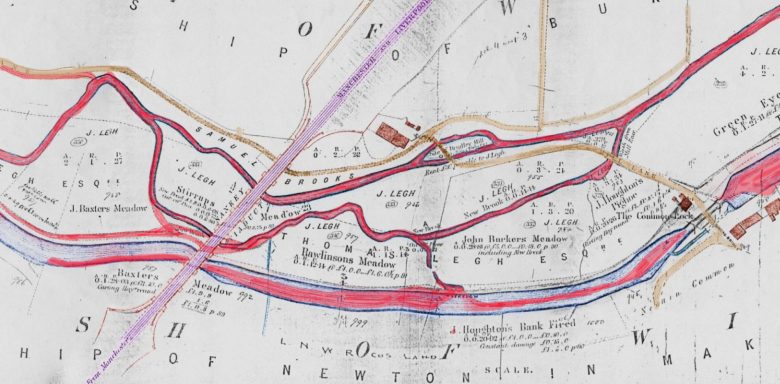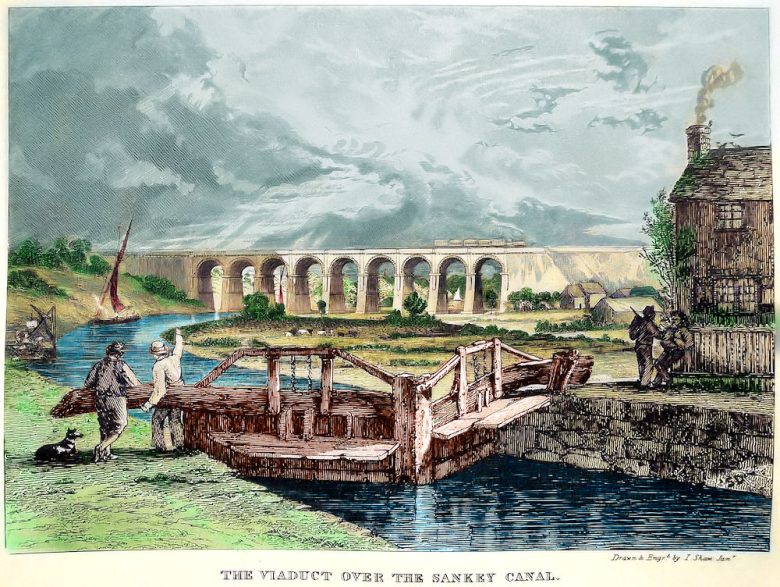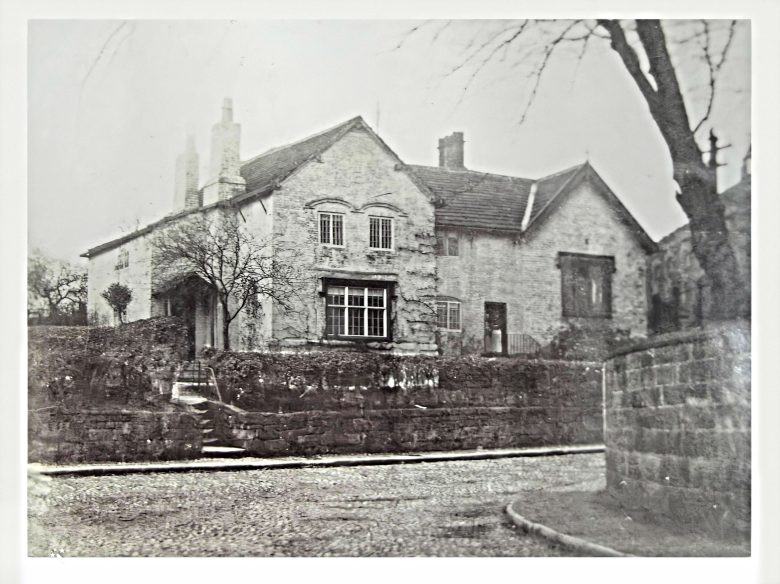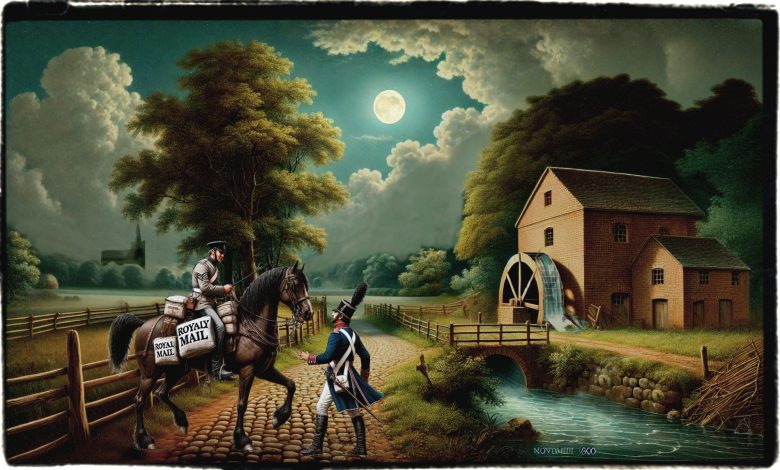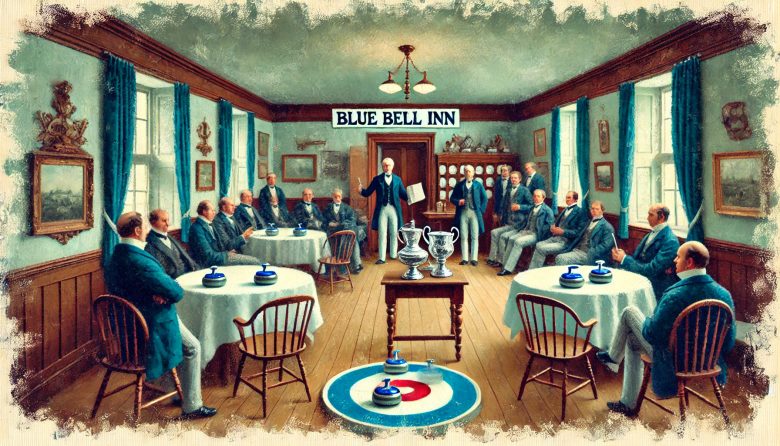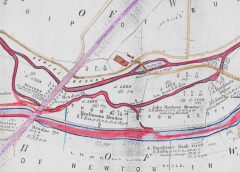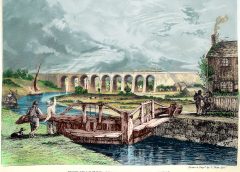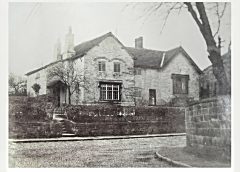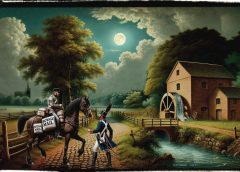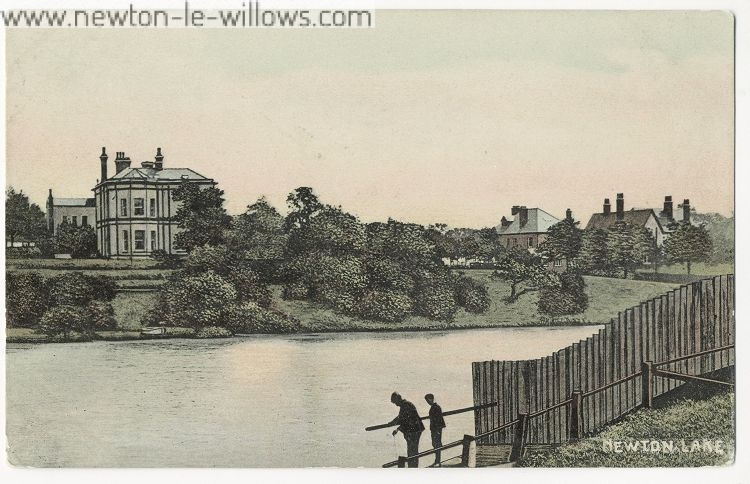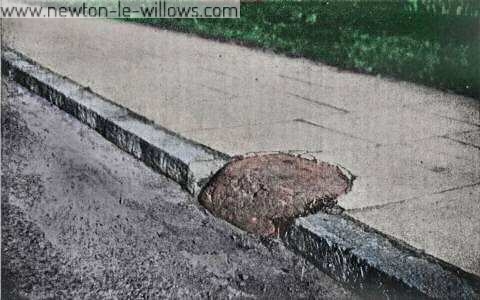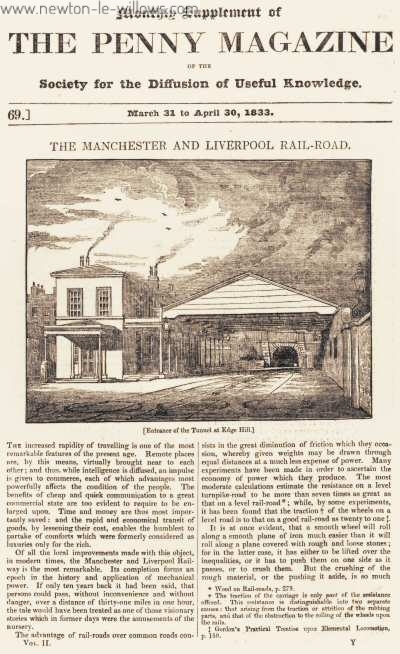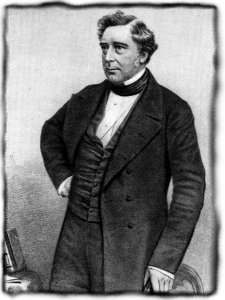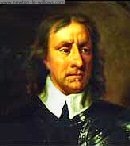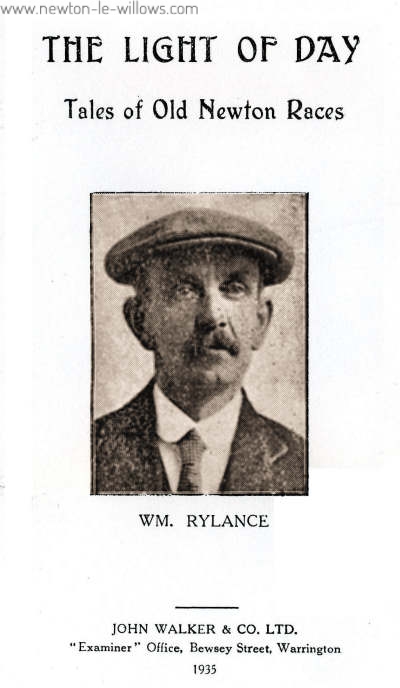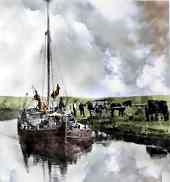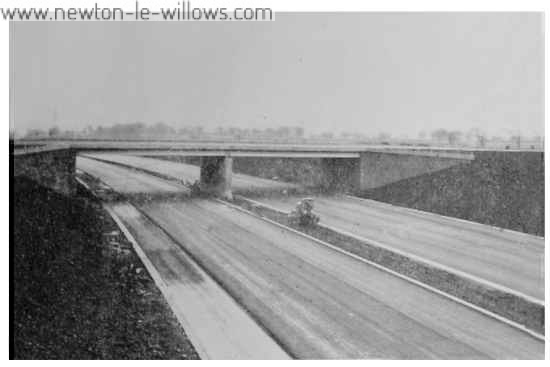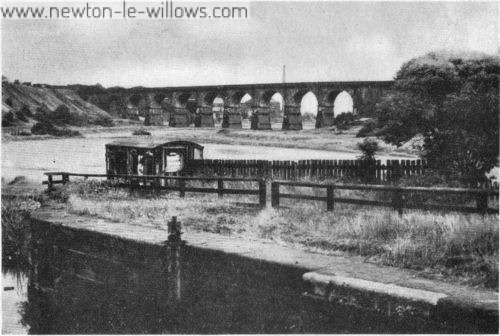The London Illustrated News, 3rd Dec 1853ON Wednesday week, the 23rd ult., an extensive Agricultural Draining Match was held on the Burtonwood Estate, the property of Samuel Brooks, Esq., banker, of Manchester, situate near the Warrington Junction station of the Liverpool and Manchester Railway. The field selected was well adapted for the purpose, and beautifully situated, commanding a magnificent view of the Sankey viaduct. The soil consists of a friable loam, on a marly substratum, with occasional beds of clay and sand. The attendance of drainers and gentlemen interested in…
Read More >>Newton-in-Makerfield: P.Mannex & Co. 1871
Newton in Makerfield Is a populace and rapidly – improving locality, containing several important industrial and manufacturing establishments. The town of Newton consists chiefly of one long and broad street, pleasantly situated on a gentle eminence, and commanding extensive and panoramic views. It is about five miles from St. Helens, seven from Wigan, and near the important Railway Station of Newton Bridge. The extensive printing establishment of Messrs. McCorquodale is near the station, and in its immediate vicinity its a first- class Hotel, while the fine old Corn mill on…
Read More >>Newton le Willows in Verse – J H Lane
Today I managed to transcribe some poems written by J H Lane, which he published in 1916 in a small 40 page booklet called “Newton le Willows – Pictures and Verse”. Most of the Pictures from the book have already made it into the photo gallery, as they duplicate ones in his other two publications, as do some of the verse from the book, but here are three small sections of verse which are new to me. A Sad Mishap. PRELUDE. Near Castle Hill, that ancient mound Whose top with…
Read More >>The Bloody Stone & Mabs Cross Legend
Members of the Lancashire and Cheshire Antiquarian Society visited Winwick in June, 1909, and were shown the Bloody Stone by the leader, Captain Arthur Doggett. The report of the visit states that the stone lay on the edge of the footpath of the road leading from Newton to Winwick Church and close to the bridge crossing the railway. The local tradition then was that the Welsh knight was overtaken and killed by Sir William de Bradshaigh “on the Bloody Stone.” THE MYSTERIOUS MURDER OF SIR WILLIAM DE BRADSHAIGH A SEQUEL…
Read More >>The Manchester and Liverpool Rail-Road
The Manchester and Liverpool Rail-Road The increased rapidity of traveling is one of the most remarkable features of the present age. Remote places are by this means, virtually brought near to each other; and thus, while intelligence is diffused, an impulse is given to commerce, each of which advantages most powerfully effects the condition of the people. The benefits of cheap and quick communication to a great commercial state are too evident to require to be en-larged upon. Time and money are thus most importantly saved: and the rapid and…
Read More >>The Sankey Viaduct ( Nine Arches Bridge )
It was then that the wealthy Quaker Joseph Sandars met William James, who proposed a railway which he undertook to build in 18 months at a cost of £100,000. Though his offer was accepted, long delays then occurred and by 1824 he was succeeded by George Stephenson as the company’s engineer. The next year a Parliamentary Bill was introduced, but it failed principally owing to Stephensons inability to answer questions on his survey by opposing counsel. He was accordingly dismissed by the board, who appointed the professional civil engineers Sir…
Read More >>The Battle of Winwick Pass, 19 Aug 1648
The following text is taken from a magazine I was recently sent a copy of, it included a brief but fairly full account of the Battle of Winwick Pass, the description of the historical events at Winwick preceded the main section of the magazines article, which was to set the scene historically for a Miniature WarGaming event of the Battle.I could have re-written the article to remove the War Game referances, but I decided to leave them in, because the details for numbers of soldiers, horses etc add to the…
Read More >>Earlestown: A History
Newton le Willows had for years had a glass works, making bottles and flat glass, this flat glass was at the time made by spinning out a large blob of glass into a large circular plate, and then cutting from this large flat plate, the largest square or rectangles possible from the centre to the edge, because the flat glass was taken from this spinning out of a single blob, it meant it was pretty impossible to make a very large single sheet of glass, the max size available, no…
Read More >>Burtonwood
Burtonwood is a village between the towns of St Helens and Warrington, whose history stretches back into the thirteenth century and probably further. The population has always been small in number, yet Burtonwood, for such a small village, is well known for two phenomena: its American connection and its beer!. Burtonwood parish is a mixture of old and new. From a small rural community of a few scattered farms and cottages it grew into a village and later became a strong farming community and then came the brewery which still…
Read More >>Tales of Old Newton Races
FOREWORD. This little book, written by Mr. William Rylance, will gain in value as the years roll on. The customs he records have changed, are changing, and will continue to change; and these descriptions of what has been, presented in graphic language by one who had first-hand knowledge of the things of which he spoke, will provide reliable material for the future historian of our social life. Moreover, the stories have a present interest and worth. They cannot but make a strong appeal to all who love to read of…
Read More >>Sankey Navigation – The first canal
Sir Richard Western (1591-1652) built the Wey Navigation between the Thames at Weybridge and Guildford. In the 15 miles, there were 7 miles of artificial cut, 10 locks and 4 weirs. The fall to the Thames was 86 ft. This navigation was opened in 1653 (concurrently with the first turnpike Acts), and is a typical river improvement of the time. John Hadly opened the Aire and Calder navigation from Weeland to Leeds and Wakefield in 1703, which Smeaton extended to Halifax in 1764. A similar project was envisioned for the…
Read More >>Sites of Interest: East of Newton-le-Willows
Sites of Interest to The East of Newton-le-Willows Site number 01 Site name Winwick to Golborne Line NGR SJ 5948 9484 to SJ 5977 9535 Site type Railway Period Post-medieval HER number MHER SJ 5994/16 Designation Sources GMAC 1995; Wardell Armstrong 2001; Ordnance Survey 1893c Description The railway was bnilt in the late nineteenth century to connect the Liverpool and Manchester railway line (Site 02) with the Warrington to Preston route. It first appears on the 1893 Ordnance Survey maps and thereafter on all subsequent Ordnance Survey maps. Assessment The…
Read More >>The M6 Motorway
The first section of the 63 miles long North-South Motorway through Lancashire to be completed was the Preston By-pass (8 miles)—Britain’s first motorway—opened by the Prime Minister, the Right Hon. Harold Macmillan, M.P., on the 5th December, 1958. The second section was the Lancaster By-pass (12 miles) opened by the Chancellor of the Duchy of Lancaster, the Rt. Hon. Dr. Charles Hill, M.P., on the 11th April, 1960. The Minister of Transport authorised the construction of the third section of the Motorway between the southern end of the Preston By-pass…
Read More >>Sankey Viaduct and Embankment
Although the Stockton & Darling-ton Railway was the first public railway on which locomotives were used, the Liverpool & Manchester Railway was the first in the accepted sense of the word today. The scheme for a railway between the great port of Liverpool and the thriving cotton-manufacturing town of Manchester, was first entertained as a practical proposition in 1821, when a preliminary survey of the proposed line was made. The company was formed in 1824, and George Stephenson was appointed Chief Engineer in 1826. The route had to be amended…
Read More >>BOB CARLISLE – “The Walker”
My earliest recollection on my way home from St. Johns School at the corner of Legh St. and Market St., and one that stands out very clearly in my mind, is of seeing a man walking round and round Earlestown Market Square. I was later to learn that his name was Bob Carlisle, and he was repeating a feat of walking one thousand miles in one thousand hours, at not more than one mile an hour. This had been performed some time before for a wager between some very prominent…
Read More >>